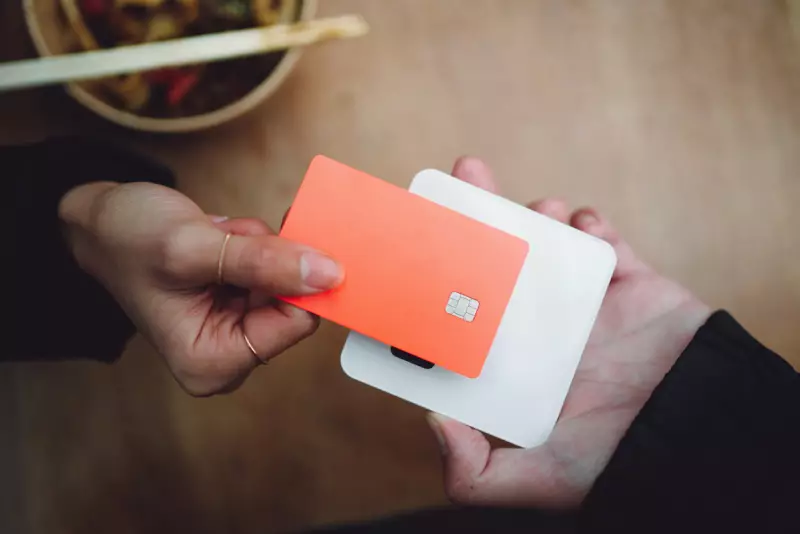Do RFID Wallets Protect from Identity Theft?
Table of Contents
- By Greg Brown
- Published: Apr 24, 2023
- Last Updated: May 02, 2023

It is doubtful we would need electronic wallet protection walking down the streets of most rural American towns. With these enclaves, it is even more doubtful that you would see anybody you would even need to be leery about. However, in many crime-ridden cities across the United States (or even around the world), it is dangerous to walk outside the home.
Protecting electronic devices, including our phones and computers, is now a prerequisite to owning the device. Most have ignored or forgotten the small magnetic stripes on the back of their credit cards, bank accounts, keycards, and more; you likely have a card with an electronic chip.
Magnetic Stripes
Magnetic tape or magstripes are made up of iron-based magnetic particles embedded in plastic film, which stores data. Each particle in the stripe is 20 millionths of an inch long and is magnetized in either a north or south position. Banking and the credit card industry have standardized the information to be contained on the stripe, along with transfer speed. Electronic readers interpret the data and either approve or deny the transaction.
Embedded particle technology has not changed much since the magnetic stripe was invented. In 1969 an IBM engineer fabricated the first card with a working magnetic stripe. Due to the magnetized stripes’ inherent security issues, in 2027, banks will no longer be required to place the stripes on the back of cards. Magnetic stripes are easily damaged and demagnetized, which may render the card useless.
The world’s largest banks and financial institutions have been moving away from stripes to favor the digital chip. The fascinating EMV chip technology opens up a whole new opportunity for banking and finance.
Stripes store personal data such as name, address, account number, and other identifiable information. Stripes have three data storage tracks stretching the width of the card. Credit, debit, and money cards use the top two tracks for their information; the third track offers additional storage for information.
Skimming
Since their introduction, fraud using the magnetic stripes on the back of money cards has been a target of data thieves. Skimming is now a significant problem for the FBI, financial institutions, and consumers. The crime generates well over 1 billion dollars a year for predators, that is $350,000 every single day.
ATM Skimmers, gas pump skimmers, and similar devices have been around for some time, and thieves continue to improve the devices.
- Fuel pump skimmers are fixed to the pump’s internal wiring and are never visible to customers. The skimmer's job is to collect as much data as possible from customers' cards; predators return later to collect the device.
- For identity protection, choose a pump closer to the front door and in clear view of the cashier. You can also pay inside rather than at the pump’s ATM device whenever possible to alleviate this concern almost entirely.
- POS and ATM terminal skimming is a popular fraud choice for innovative predators. Skimming criminals use overlay devices that fit over card readers, and in some cases, overlays are placed on the keypad. Sneaky predators use strategically placed pinhole cameras to record users entering their code.
Users need to be aware of anything unusual on a card reader and be on the lookout for scratches, damage, or anything loose. Use ATMs in well-lit, public places and be alert for anything unusual.
RFID Skimming
Radio frequency Identification is a technology using radio waves to identify objects and people. Digital data can be encoded into tags or smart labels and then captured by a reader with radio wave technology. One of the most notable advantages is that RFID tag data can be read outside the line of sight.

Predators use RFID readers and specialized equipment to read the RFID chip at a distance. Be wary of someone trying to hide equipment at the café, grocery store, or the movies. RFID technology is all around us, hidden in plain sight. RFID readers are at our every stop; the technology improves business performance, compliance, and safety.
RFID Wallets
One of the most important steps anyone feeling nervous can take to protect themselves from RFID-skimming predators is purchasing an RFID wallet. So, what is an RFID blocking wallet, you may ask?
Some still believe RFID blocking is a scam, and no one needs the wallet. However, there is a strong belief that any protection is better than none in places such as airports, malls, or restaurants. RFID patents stretch back to the 1970s.
RFID blocking takes a piece of carbon fiber or aluminum to block the electromagnetic signals emitted from your card. RFID wallets act much like a Faraday Cage. The Faraday shield creates an enclosure that blocks all electromagnetic signals.
RFID wallets can be purchased at various online retailers, with price points of $10 to several thousand dollars. Wallets are now much more stylish than before, with bi-fold and tri-fold options being very popular.
Do RFID Wallets Work?
The new RFID blocking technology is popping up everywhere, and some people will buy the wallet and never step into a gathering greater than two. But do they work? Yes, The improved carbon is highly flexible and reduces or eliminates signals, preventing the microchip from working.
New technologies allow scientists to experiment and test many more materials for RFID blocking. The most common materials tested are alloy nickels, copper, and aluminum, with aluminum being the most successful.
Protecting Your Plastic Is Not a Bad Idea – For Some
Does every consumer really need a technology that blocks emissions from their credit cards? In most cases, no. However, if each of your cards are platinum and your cash cards all have $500k, you may want to think about the viability of an RFID wallet.
For heavy travelers and floor managers who deal with a lot of people daily, it is a good idea to spend the small amount and protect your debit card. However, they are not a godsend and the answer to everything that is wrong with predators.
Choose a quality wallet with better than aluminum for protection. The scams for RFID wallets are plentiful, and predators are always on the lookout for unwitting consumers. Shop around and find the product that matches your needs.
















